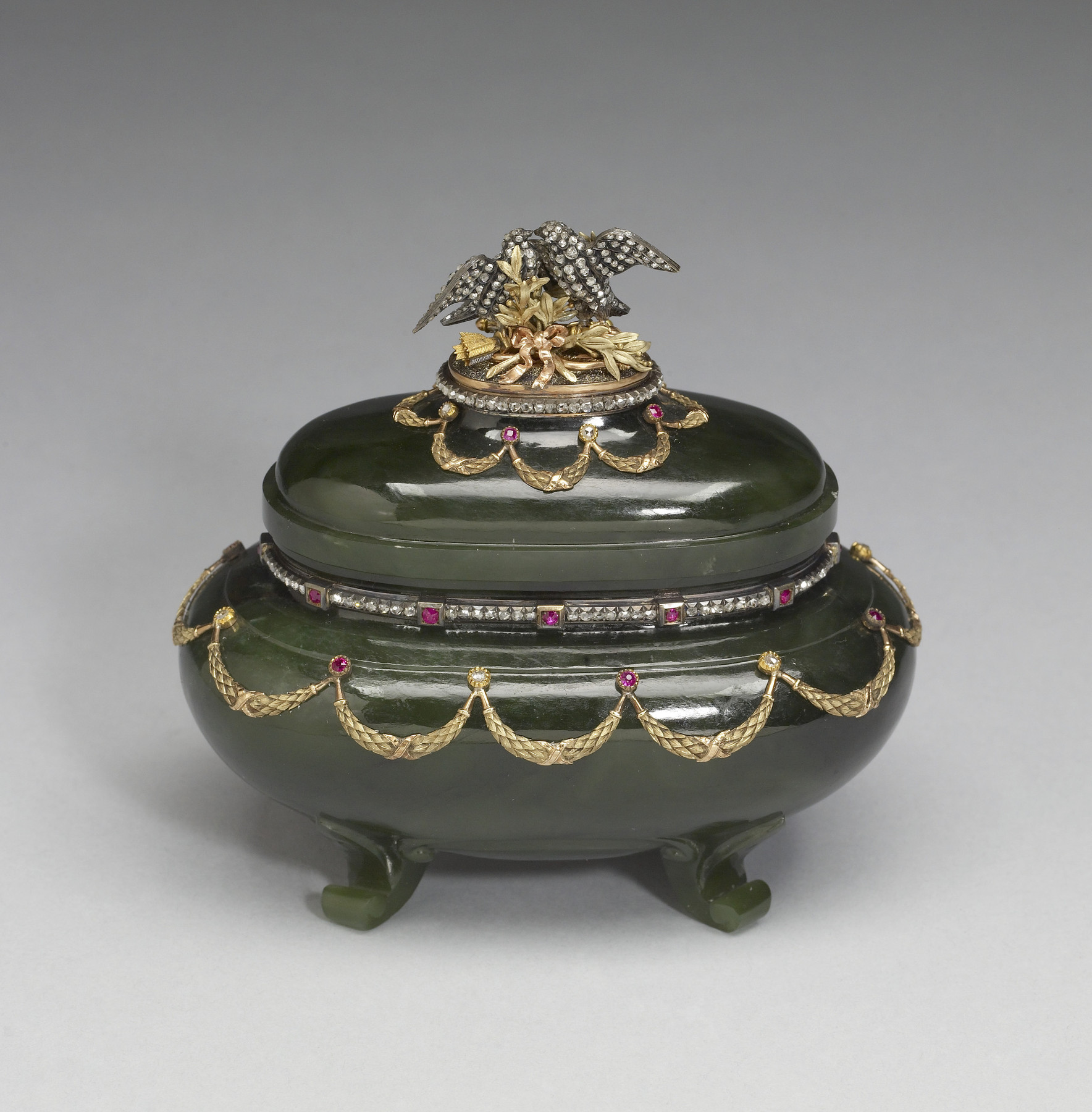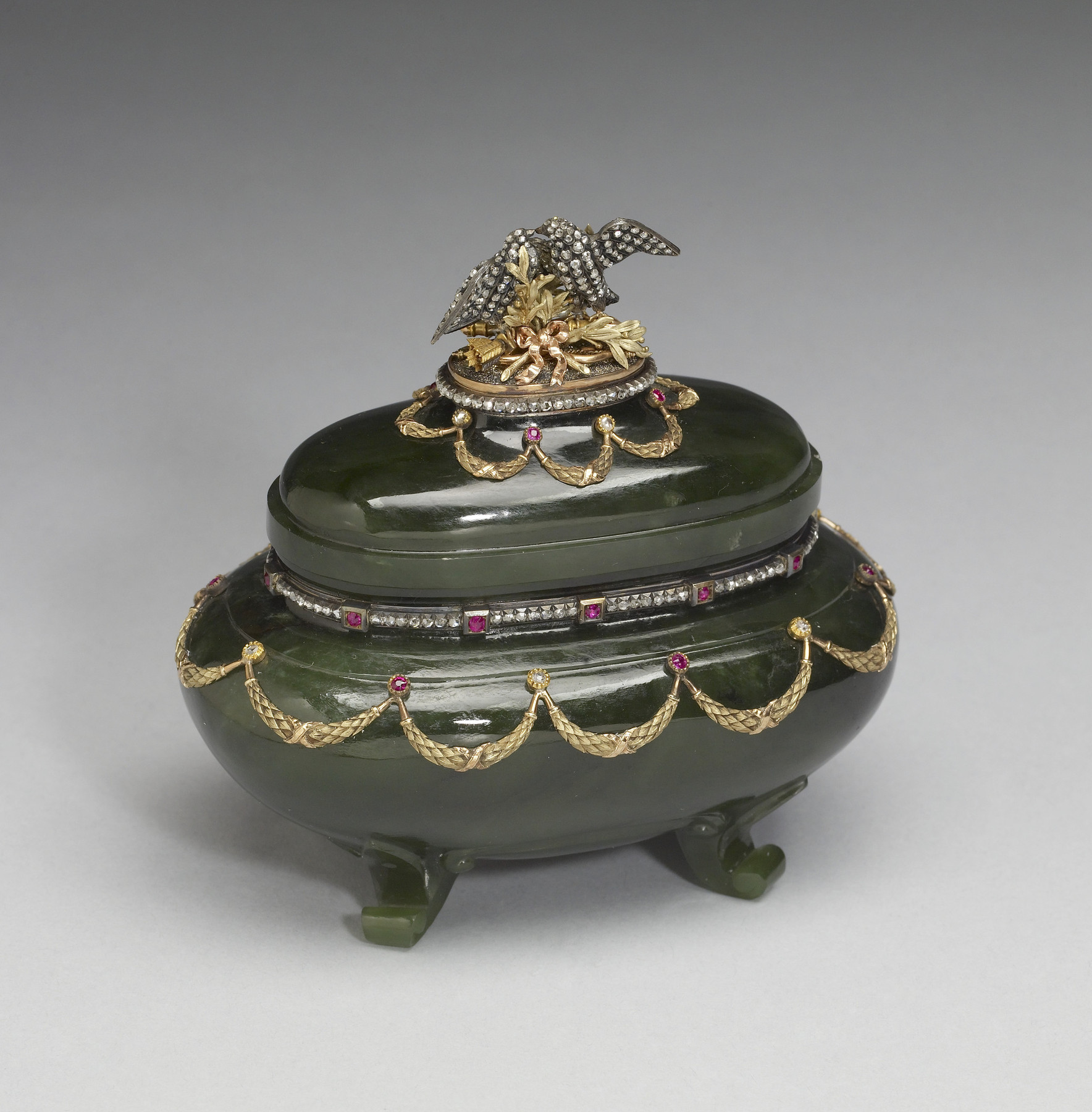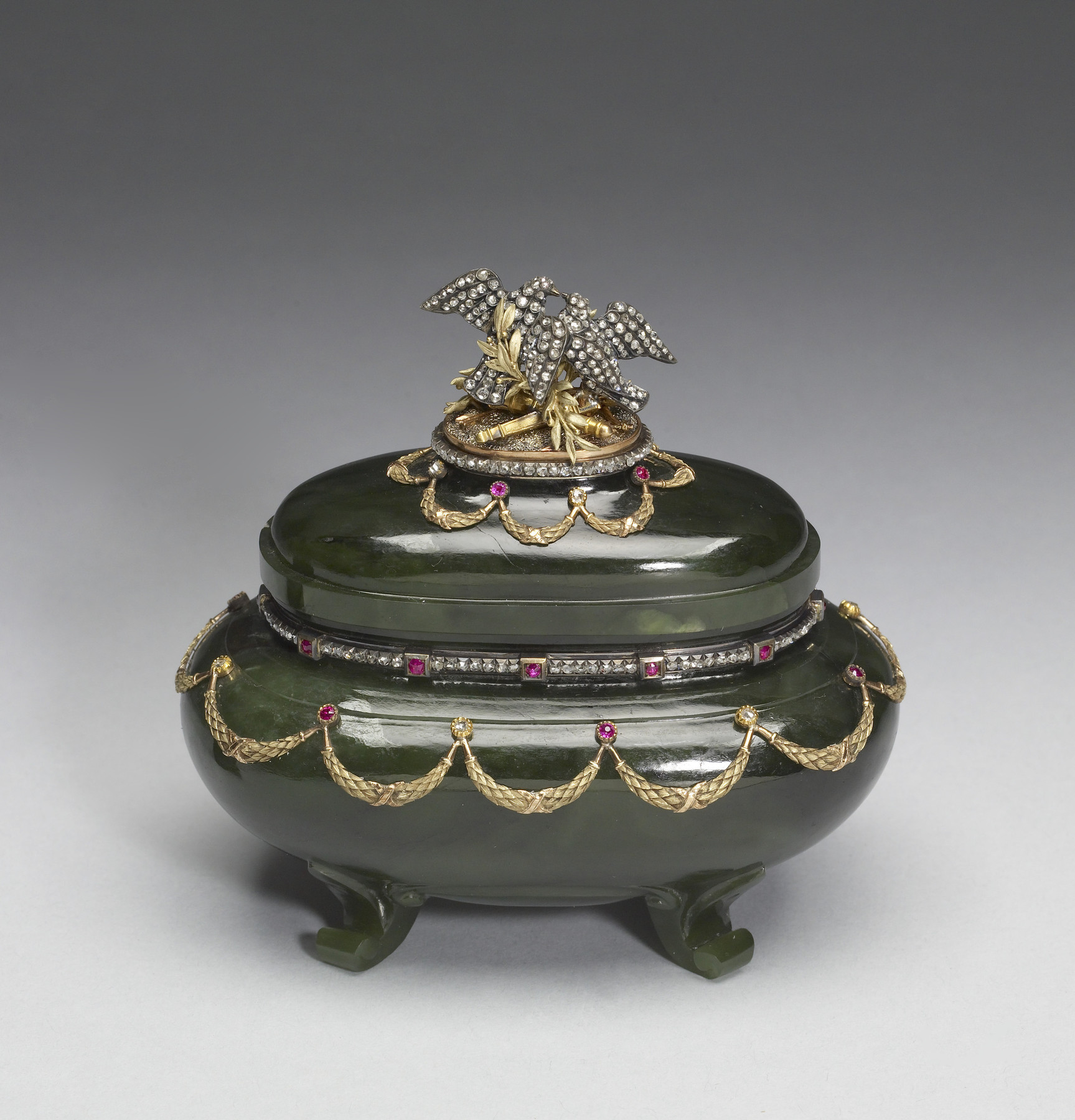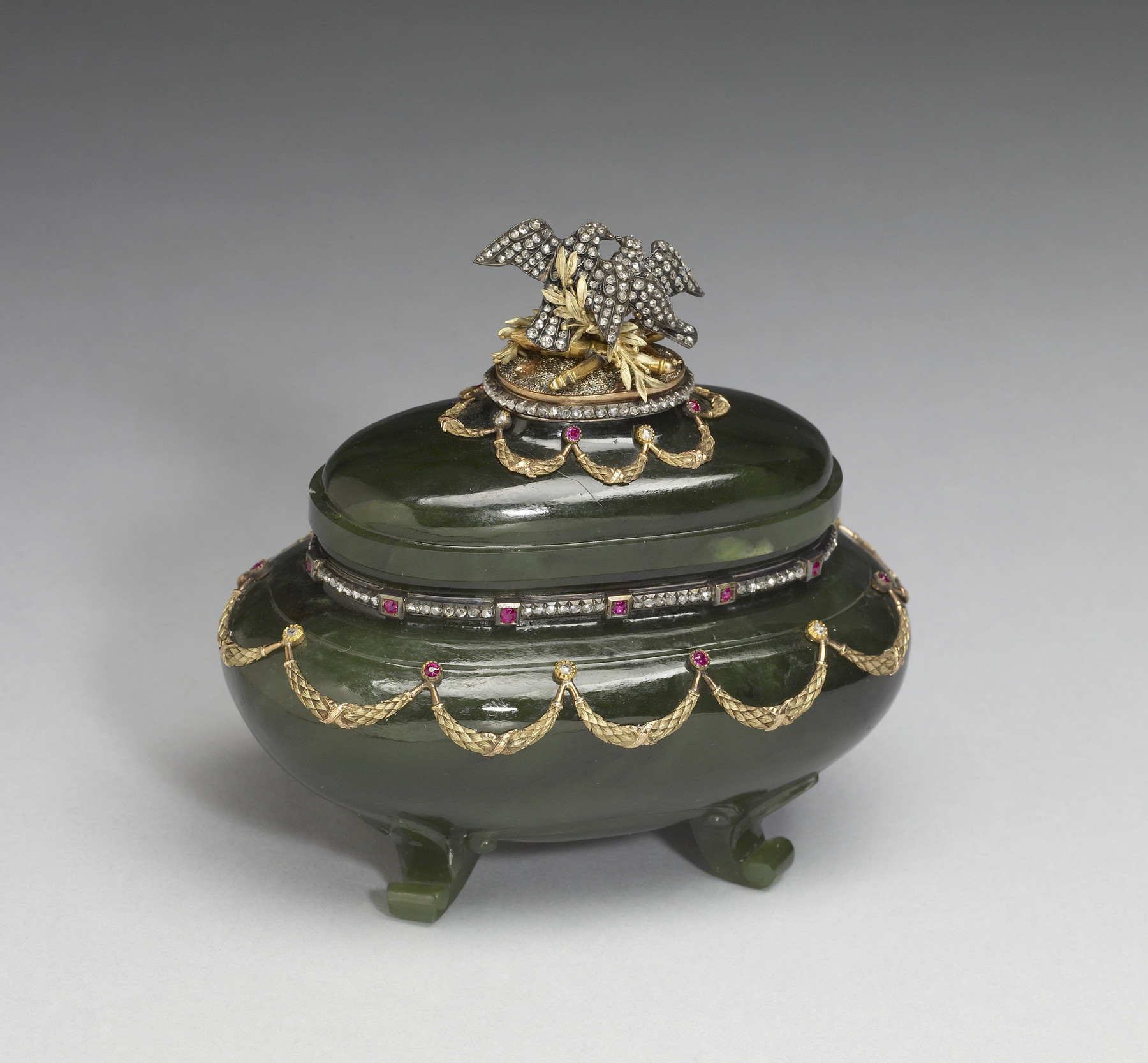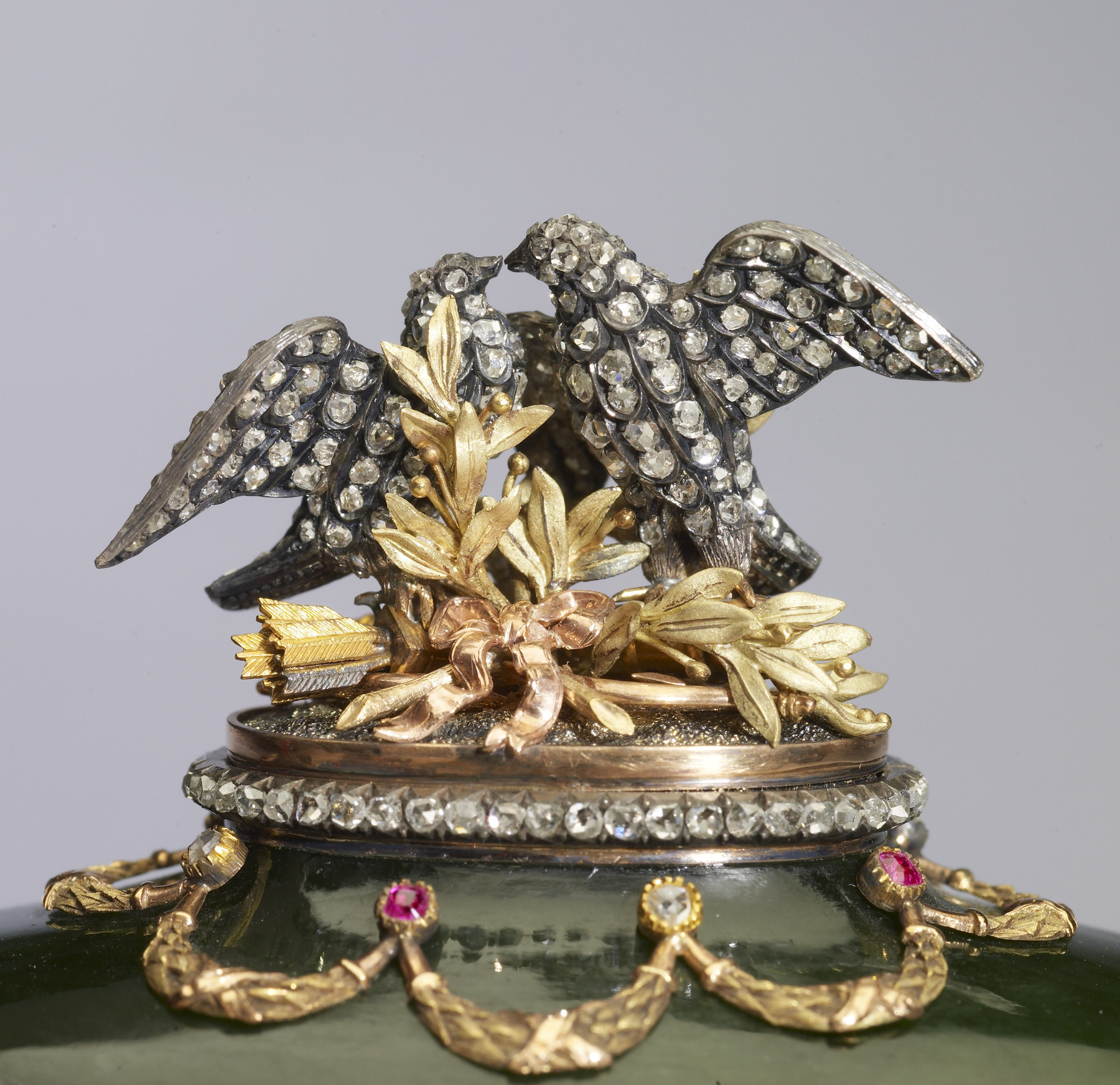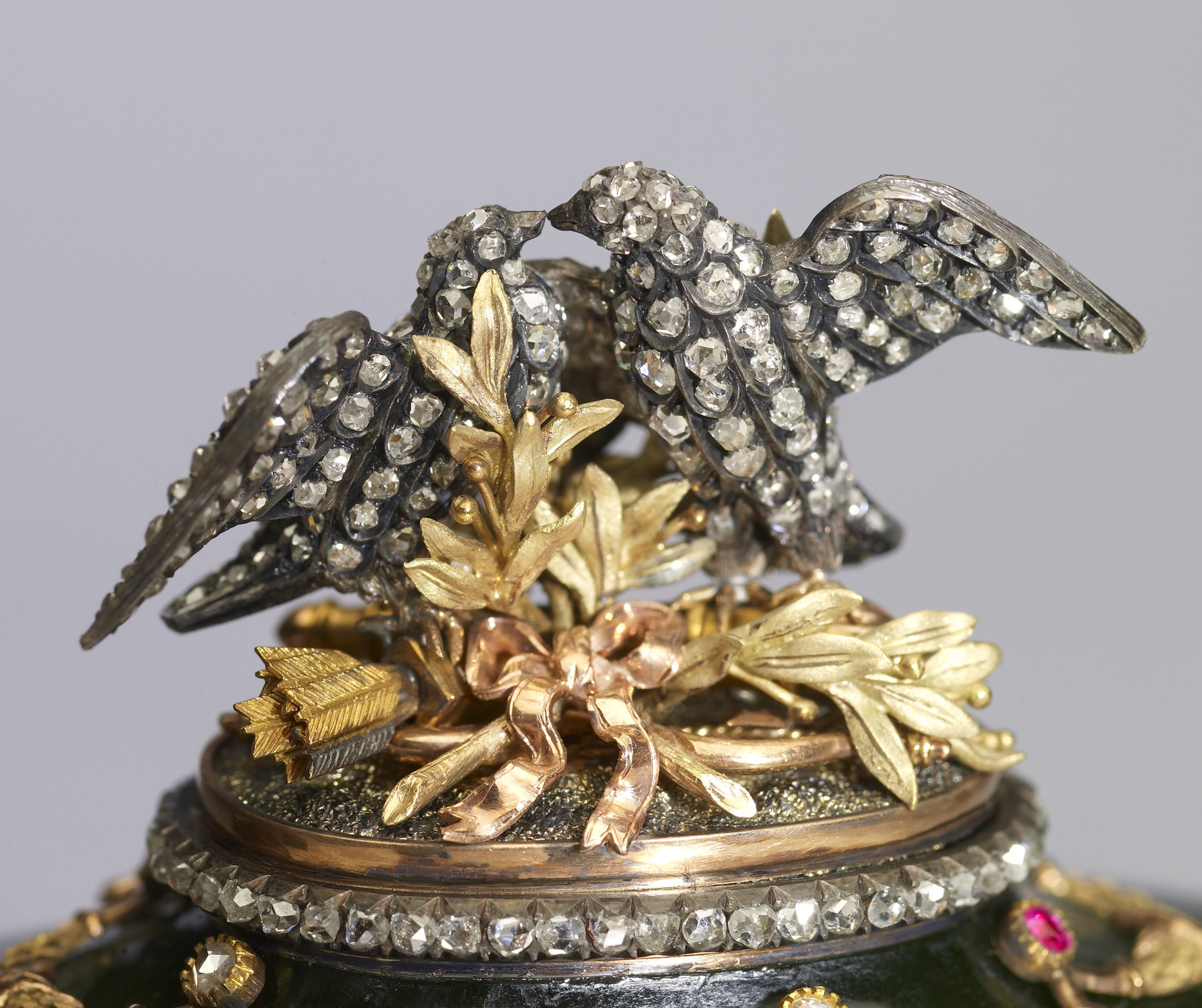Urn with Cover
(18th and 19th Centuries )
This tureen-shaped urn is carved of nephrite, a green jade much favored by the Fabergé firm. Enormous nephrite boulders had been discovered along the Onot River in eastern Siberia in 1851. A pair of loving doves in pavé-set diamonds and a cupid's bow and arrows in green and red gold--both motifs associated with the French 18th-century master François Boucher--are mounted on the urn's cover. Suspended from alternating diamonds and rubies are yellow gold garlands with red gold ties. Rows of diamonds, interspersed at intervals with rubies, line the rim of the urn. This piece is of exceptional quality and may, in fact, be an imperial commission.
Provenance
Provenance (from the French provenir, 'to come from/forth') is the chronology of the ownership, custody, or location of a historical object. Learn more about provenance at the Walters.
Alexandre Polovtsoff (Aleksandr Aleksandrovich Polovtsov), Paris, by purchase; Henry Walters, Baltimore, 1929-1930, by purchase; Walters Art Museum, 1931, by bequest.
Exhibitions
| 2017-2018 | Fabergé and the Russian Crafts Tradition: An Empire's Legacy . The Walters Art Museum, Baltimore. |
| 2014-2016 | From Rye to Raphael: The Walters Story. The Walters Art Museum, Baltimore. |
| 2003-2004 | The Fabergé Menagerie. The Walters Art Museum, Baltimore; Columbus Museum of Art, Columbus; Portland Art Museum, Portland. |
| 1984 | Objects of Vertu: Precious Works of the Eighteenth Century. The Walters Art Gallery, Baltimore. |
| 1993-1994 | Fabergé. The State Hermitage Museum, St. Petersburg; Musee des Arts Decoratifs, Paris; Victoria and Albert Museum, London. |
Conservation
| Date | Description | Narrative |
|---|---|---|
| 7/16/1964 | Treatment | cleaned |
| 2/1/1988 | Examination | examined for condition |
| 2/1/1988 | Treatment | cleaned |
| 10/8/1992 | Examination | examined for loan |
| 1/3/2003 | Treatment | cleaned |
| 5/1/2004 | Treatment | cleaned |
Geographies
Russia, St. Petersburg (Place of Origin)
Measurements
H: 3 3/4 × W: 3 7/8 × D: 2 7/16 in. (9.5 × 9.8 × 6.2 cm); Urn H: 2 × W: 3 7/8 × D: 2 7/16 in. (5.1 × 9.8 × 6.2 cm); Lid H: 1 3/4 × W: 1 9/16 × D: 2 15/16 in. (4.4 × 3.9 × 7.4 cm)
Credit Line
Acquired by Henry Walters, 1929-1930
Accession Number
In libraries, galleries, museums, and archives, an accession number is a unique identifier assigned to each object in the collection.
In libraries, galleries, museums, and archives, an accession number is a unique identifier assigned to each object in the collection.
57.913

